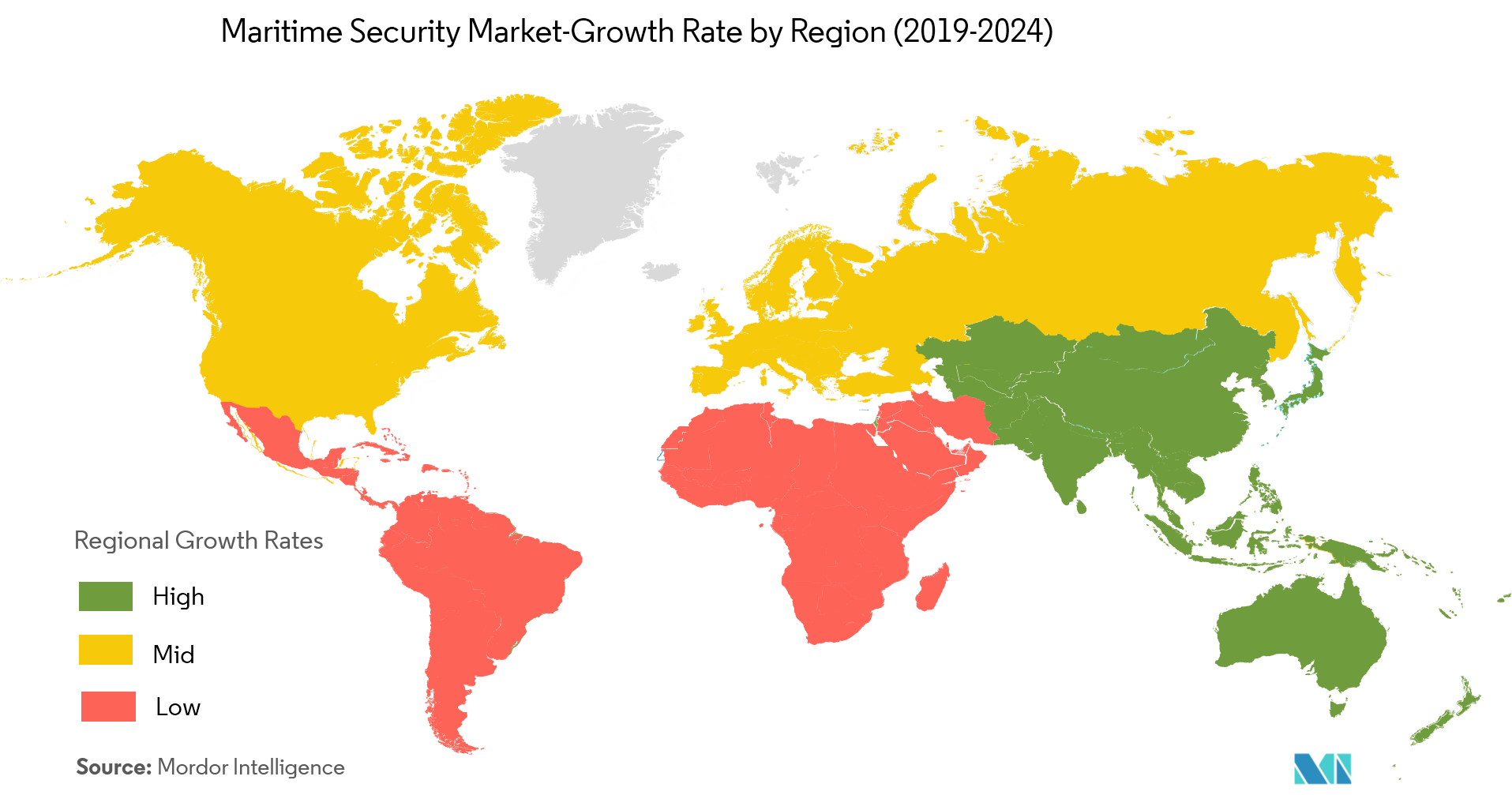Market Trends of Maritime Security Industry
This section covers the major market trends shaping the Maritime Security Market according to our research experts:
Increased Seaborne Threats And Ambiguous Maritime Security Policies
- There have been reports of links between cyber attacks and physical piracy, in which pirates have reportedly identified ships that carry valuable cargo and minimal onboard security, by infiltrating the systems of shipping companies. This has led to the emergence of developing a sound security system, with services such as a private communication channel, etc.
- Maritime terrorism, drug trafficking, gun-running, piracy, and other non-traditional seaborne attacks, increased exponentially in the past decade and threatens many nations today. This state has given rise to a shift towards asymmetric forces, from the use of conventional force-structured defense forces. Maritime security is critical to national, as well as human, safety, and it is also linked to economic development since it affects sea trade.
- Post-Cold War, the maritime security ecosystem in the Indian Ocean transformed, and this has given rise to non-conventional security challenges in the Indian Ocean, such as piracy, human and drug trafficking, as well as maritime terrorism. Piracy operations on shipping and energy industries have impacted almost all ships navigating in the waters of the Indian Ocean, the Gulf of Guinea, and Southeast Asia.
- The security situation in the Horn of Africa is particularly bad. Violent insurgencies are frequent, in some sea routes, and they threaten the political and economic stability of neighboring nations. Lack of multi-nation maritime security strategy across oceans is making this naval force projection vulnerable.
- For instance, in September 2018, in the West Africa sea region, near Conakry Port, violent crime is reported periodically, and one such attack happened days after a robbery and kidnapping attempt, targeting a vessel at Conakry anchorage, in the early second week of September.

North America Has The Largest Share In The Market.
- The United States maritime domain is distinctive in its scope and diversity, with more than 95,000 miles of coastline, and 350 ports. Border operation teams with high integration of security solutions, in Canadian and US agencies, work together sharing information and expertise, to support operations along the United States and Canadian border. NORAD’s maritime warning mission provides a value-added contribution to the maritime defense and security of Canada and the United States in North America.
- The architecture of Command, Control, Communications, Computers, Intelligence, Surveillance and Reconnaissance (C4ISR), has been enhanced with intelligence information sharing among the nations, in the wake of 9/11. North America, over the past few years, has taken giant leaps regarding technological advancement, with companies’ making approaches to add value to the market growth.
- In this region, the market is gaining more prospect by the risk analysis services, offered by the companies, i.e., data-driven risk analysis is the emerging application in risk identification, for high-risk and low-risk routes. This profoundly impacts the shipping costs and insurance premium, for shipping companies.


